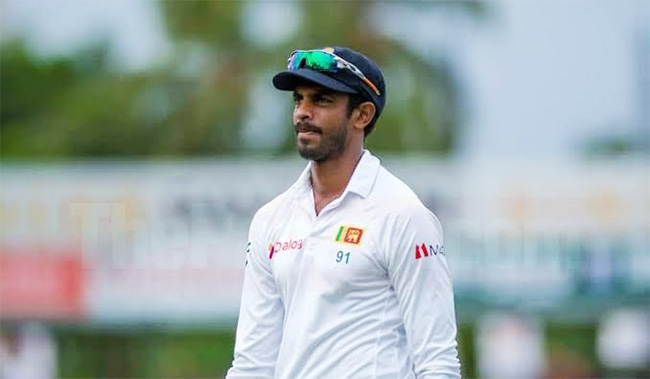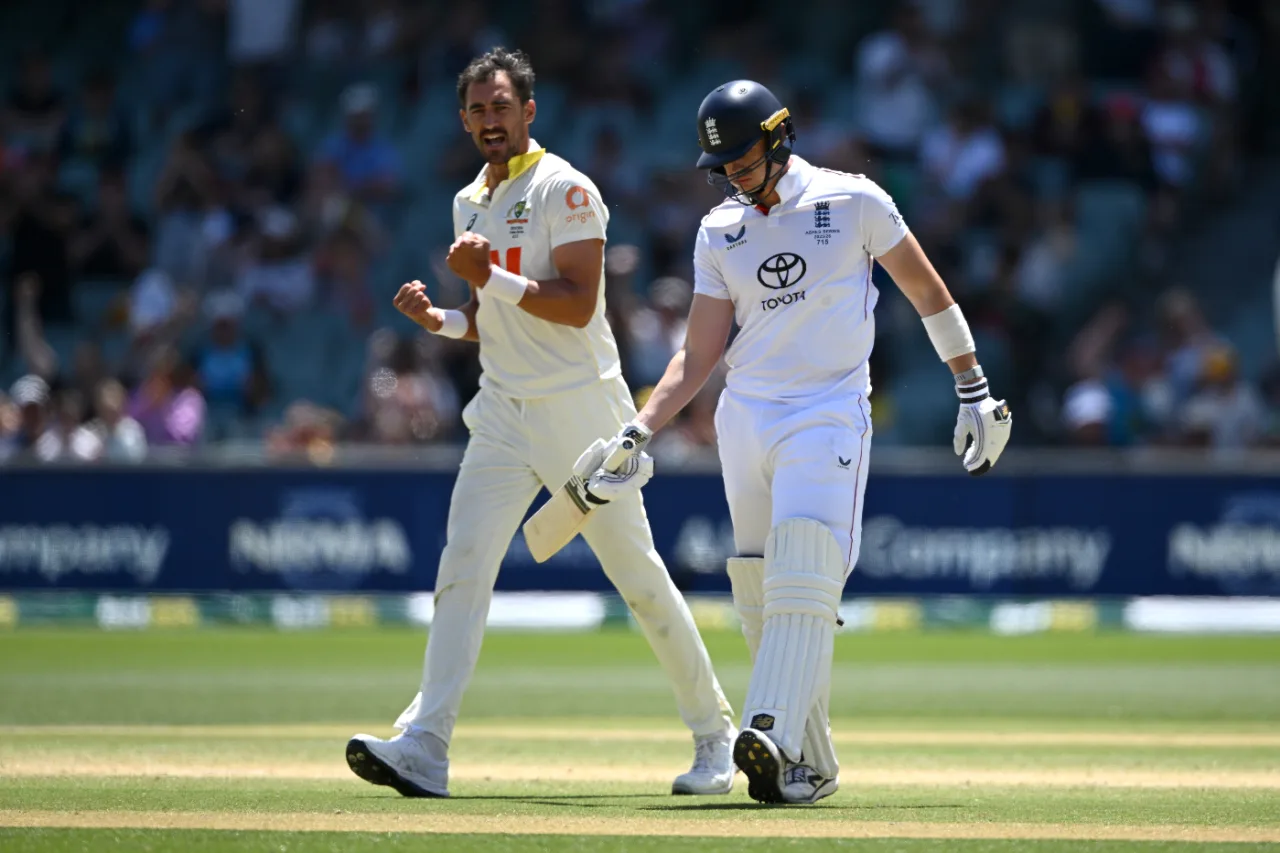Sports
When rain and number drowned South Africa’s World Cup dreams

Rex Clementine
in Durban
It was the unlikeliest of scripts: the host nation, South Africa, bowing out of the 2003 Cricket World Cup in their backyard, undone by a bizarre twist of fate – and a misread Duckworth-Lewis sheet. To borrow a line from Shakespeare, the fault lay not in the stars but in themselves.
South Africa’s hopes were sky-high as they hosted cricket’s crown jewel, much like the unifying fervor of the 1995 Rugby World Cup, where Nelson Mandela’s charm and Francois Pienaar’s leadership wove a fractured nation into a tapestry of pride. But on a rainy night in Durban, those dreams were washed away—quite literally—by Sri Lanka, in what remains one of the most talked-about matches in cricketing folklore.
Sri Lanka didn’t even win the game, but they didn’t need to. The Proteas, staring at a rain-curtailed chase, fell victim to faulty math – or more precisely, an incorrect interpretation of the Duckworth-Lewis method. With just one run needed to clinch the game, Mark Boucher blocked a ball, thinking the job was done. It wasn’t.
Jehan Mubarak, now Sri Lanka’s Data Analyst, was then a young 12th man with a critical role: carrying the Duckworth-Lewis sheet to the middle. A son of scientist Dr. Aziz Mubarak, Jehan was born in Washington DC and educated at Royal College. He was well-equipped for the task. Reflecting on the drama, he shared:
“I had to deliver the Duckworth-Lewis sheet to the team. Nicky Boje, South Africa’s 12th man, was doing the same for his side. The sheet clearly states that the scores listed are for a tie, not a win. You always need one more run to win. We read it correctly; they didn’t—and it cost them dearly.”
Mubarak’s delivery may not have been on the scorecard, but it was game-changing. As the rain began to pour, South Africa believed they were safe. They weren’t. The match ended in a tie, knocking the Proteas out and allowing Sri Lanka to advance.
During the game, Mubarak also made a brief appearance as a substitute fielder for Marvan Atapattu. But things didn’t go entirely smoothly:
 Jehan Mubarak played an important role in knocking South Africa out of the 2003 World Cup. He didn’t play the game, but as 12th man, he carried the Duckworth Lewis sheet and had to convey the important message.
Jehan Mubarak played an important role in knocking South Africa out of the 2003 World Cup. He didn’t play the game, but as 12th man, he carried the Duckworth Lewis sheet and had to convey the important message.
“Sanath (Jayasuriya) was yelling for me to take a catch, so I sprinted toward the ball. It was a tough chance, and I couldn’t hold on. The ball went for four, and I got an earful from the captain. In a game like that, every chance counts. Thankfully, it didn’t affect the result.”
At 22, Mubarak was the youngest player in the squad, playing just one match in the tournament—a forgettable outing against India where he fell for a second-ball duck to Javagal Srinath, the current Match Referee. But for Mubarak, the World Cup was a crash course in high-stakes cricket:
“It was a fantastic learning experience. Against South Africa, Marvan made a stunning hundred, and Aravinda de Silva chipped in with a brilliant 70. We were struggling at 90 for three, but their 150-run partnership turned things around. Watching those legends adjust to different conditions and handle pressure was invaluable for a young player.”
Mubarak recalls the advice he received from stalwarts like Sanath, Marvan, Hashan Tillakaratne, and Aravinda.
“They’d always say, ‘Play positive cricket. Don’t be afraid. Whatever the opposition does – sledging or pressure tactics – hold your ground and never take a backward step.’ Those words stayed with me.”
After hanging up his boots, Mubarak transitioned into coaching, even leading Sri Lanka’s Under-19 team to a series win in England. Later, Sanath Jayasuriya brought him into the senior team setup, recognizing his analytical mind. Today, Mubarak serves as the team’s Data Analyst, a role that suits his methodical nature:
“My job is to analyze data and share it with the coaches and players. We study not just our team but the opposition as well. At SLC’s Brain Center, we look at everything—batting patterns, bowling trends, field placements—and pass on actionable insights.”
Latest News
No Christmas miracle for England as Australia make it 3-0 to retain the Ashes in 11 days

In the third Test, they rose again, but there was to be no Christmas miracle. Despite a gutsy fight from England’s lower order that hauled an already lost cause deep into the afternoon session of the final day, Australia held their nerve – and their catches – to seal the 2025-26 Ashes with their third victory in a row on only the 11th day of the series.
The winning moment was delivered by Scott Boland, who induced a thick edge from England’s No. 11 Josh Tongue, straight to Marnus Labuschagne at first slip, who swallowed his fourth take of a truly sensational display in the field. That left Brydon Carse high and dry on 39 not out; his efforts, alongside fighting but ultimately thwarted knocks of 60 and 47 from Jamie Smith and Will Jacks. had given England genuine hope that their performances at other key moments of the Test and the series, simply hadn’t warranted.
Labuschagne’s efforts included his second one-handed screamer of the match, this time to prise out Jacks at first slip, and it was a fitting reminder of one of the key differences between the sides. The winning margin of 82 runs was exactly the same score that Usman Khawaja had reached on the first day of the match, after being dropped by Harry Brook on 5, while the 71 runs that Travis Head made after the same fielder had reprieved him on 99 would prove to be the death knell of England’s series hopes.
And yet hope is most certainly what England had, right up until the moment it was finally snuffed out, and by a familiar nemesis.
For the first time in the series, the Player-of-the-Match award would elude Mitchell Starc, but his claim to the Compton-Miller Medal is now beyond any further discussion. On a day when Australia’s resources were stretched by a potentially series-ending injury to Nathan Lyon, Starc stepped up with the first three of the final four wickets required. His left-arm angles and command of seam and swing were able to extract rare life from an unthreatening Adelaide surface, and once armed with the harder new ball, the end was always nigh despite England’s doughtiest day’s work of the series.
The day of reckoning had dawned with 17 overs remaining until Australia’s new ball, so Lyon and Cameron Green shared the early workload to keep the senior seamers fresh. Despite some early alarms against the short ball, Smith and Jacks settled quickly into a confident stand, with Smith smashing a brace of sixes over the leg-side off spin and seam alike to whittle the requirement below 200.
It was a boon for the Barmy Army on an overcast morning, and their ever-mounting optimism reached an early crescendo midway through the day’s 11th over, when a persistent shower blew across the ground to force a 40-minute delay.
Jacks brought up the fifty stand soon after the resumption, but the biggest moment of the morning came one over later. Lyon, at fine leg, dived valiantly to intercept a Jacks pull, but was in obvious discomfort as he clambered back to his feet. It was instantly apparent that he’d damaged his right hamstring, and as the physio came out to assist him back to the dressing-room, his involvement in the series – as with his torn calf at Lord’s in 2023 – appeared to have come to an abrupt end.
That was the cue for England to step up their tempo. With the new ball looming, Smith cracked three fours in a row off the part-time spin of Travis Head and Marnus Labuschagne, and then – having taken a few sighters as Mitchell Starc and Pat Cummins re-entered the attack – decided the new ball had to travel as well.
Smith reeled off a quartet of superb, imposing boundaries – two in a row off each man, including a straight-batted launch through long-off off Cummins to bring up his first fifty of the series. But just when it seemed he’d rocked Australia back on their heels, Smith attempted one big shot too many: a wild pick-up across the line off Starc. Cummins at wide mid-on backpedalled to swallow the chance, before turning to the crowd to celebrate with a combination of triumph, and some relief.
It was all too familiar from an England point of view: opportunity not so much knocking as ding-dong-ditching, as another moment of optimism came and went with indecent haste. Jacks, however, stayed true to the methods that had served him well in adversity at the Gabba, remaining watchful outside off and dealing largely in nudged singles square of the wicket. Despite one alarming deviation from that norm – a pre-meditated whip to leg off Cummins that he was lucky not to snick to the keeper – he and Carse carried England through to lunch on 309 for 7, a deficit of 126.
Australia thought they had their breakthrough shortly after the resumption, as Cummins pinned Carse on the pad, but umpire Nitin Menon’s verdict was a shocker – the ball was shown to be missing a second middle stump, and Carse, on 15 at the time, marched on. He responded to the reprieve by planting Head’s part-time spin over deep midwicket for six, and when he flicked Boland off his pads through fine leg, he had hauled the requirement down to double figures.
Australia, however, were starting to create chances and pressure with seam at both ends, and two balls later, Starc served up a wobble-seam outside off, and Labuschagne sprung to his left at first slip to pluck a fat edge in one hand, almost out of Alex Carey’s waiting gloves.
The end was nigh. Carse was dropped by Green at second slip – standing so close to ensure every half-chance carried – and even Carey, Player of the Match for a peerless performance both in front and behind the stumps, endured a rare blemish as Archer snicked one into his elbow: had he been standing back to Boland, it would have been a regulation take.
It mattered not, however. Archer has been one of England’s batters of the series to date – which, for a No.10/11 is a damning indictment of their efforts – but this time he couldn’t be the hero. A slashing cut at Starc picked out deep point, and eight balls later, Australia’s fourth home Ashes in a row was in the bag, and once again at the earliest opportunity.
Brief scores:
Australia 371 and 349 (Travis Head 170, Alex Carey 72; Josh Tongue 4-70, Brydon Carse 3-80) beat England 286 and 352 (Zak Crawley 85, Jamie Smith 60, Will Jacks 47; Mitchell Starc 3-42, Pat Cummins 3-48, Nathan Lyon 3-77) by 82 runs
[Cricimfo]
Sports
Clean promises, dirty selection

This week’s revamp of the national selection panel, capped by the return of a proven failure, has sent shockwaves through cricketing circles, leaving jaws on the floor and eyebrows firmly raised. What is even more baffling is the timing. With barely two months to go for the World Cup that Sri Lanka will co-host, why this mad dash to reshuffle the deck? It smacks of panic rather than planning.
Yes, the term of the selection panel had technically expired. But cricket, like life, is not always played by the letter of the law alone. Common sense, that increasingly rare commodity, suggested a simple two-month extension for continuity’s sake. Upul Tharanga, after all, had done a stellar job: transparent, practical and refreshingly free of smoke and mirrors. Few would have raised a murmur had he been granted an extension. Under his watch, Sri Lanka won a Test in England after a decade in the wilderness, chalked up series wins over India and Australia and climbed to fourth in the ODI rankings. That is a CV that reads far better than that of the man now warming the chairman’s seat.
The only conclusion one can reasonably draw is that this appointment was rushed through for political reasons. NPP strongman Upul Kumarapperuma stands accused of nudging Pramodya Wickramasinghe back into the chief selector’s chair. When contacted by this newspaper, Kumarapperuma denied any interference, but conceded that the two were classmates at Rahula College, Matara, are close friends and that Pramodya had attended his political rallies in Matara in the lead-up to last year’s General Election. If it walks like a duck and quacks like a duck, you don’t need the third umpire.
The Sports Minister has defended the decision, arguing that he could choose only from among those who had applied for the post. That defence doesn’t quite stand up to scrutiny. Cricket history offers several counter examples. The most recent is Graeme Labrooy, appointed in 2017 despite not applying. He did a commendable job and during his tenure Sri Lanka ended Pakistan’s decade long unbeaten run in the UAE, their adopted fortress due to civil unrest back home. If exceptions could be made then, why not now? Why wasn’t the same discretion shown when it mattered most?
The Minister’s move to include a woman in the selection panel deserves applause and is long overdue, the first such appointment in Sri Lanka’s cricketing history. Sadly, that progressive step has been eclipsed by the choice of chairman, undoing much of the goodwill in one clumsy stroke. A quick straw poll among fans would tell its own story.
There is no denying that the NPP has done several commendable things since coming to power, standing shoulder to shoulder with the common man. The decision to give up perks and privileges has struck a chord with the public. But the appointment of the cricket selection committee has left a distinctly bad taste. Those calling the shots appear to have been hoodwinked by forces within. That, at least, is the inescapable conclusion.
The government’s Clean Sri Lanka project is gathering momentum, but on the cricketing front the broom seems to have been left in the pavilion. A bit of homework would have unearthed the many alleged scandals where this individual’s name has surfaced — from clearing acres of pristine forest land for banana cultivation to lottery scams and the controversial purchase of bus ticketing machines for the Transport Ministry. So much for clean hands and straight bats.
As for Pramodya’s previous stint as chief selector, it was a car crash in slow motion. Sri Lanka stumbled through multiple qualifying rounds in World Cups and then ended up ninth in a ten team World Cup in 2023 and missed out on the Champions Trophy altogether. To see him parachuted back two years later is beyond belief. A bull in a china shop would cause less damage.
If Sri Lanka come a cropper at the World Cup, the buck must stop somewhere. And it should stop with the government, particularly those representing the Matara district, who chose to play politics promoting their lackeys when the nation needed a steady opener at the crease. How sad!
by Rex Clementine ✍️
Sports
Lyon, Cummins shut the door on England’s slim Ashes hopes

Australian relentlessness in Adelaide has all but ensured possession of the Ashes for two more years. Set a world-record target of 435 to win the third Test and keep the series alive, England found some belated fibre to their batting, led chiefly by Zak Crawley’s 85 – only for the enduring excellence of Pat Cummins and Nathan Lyon to emphatically shut the door on them.
Cummins took the first three wickets to fall, including Joe Root for the 13th time in Tests, before Lyon plucked out three more during the final session to break England’s resoBrydon Carse lve. Crawley played admirably but could not convert what would have been a second hundred against Australia, lured from his ground by Lyon with the shadows beginning to lengthen for Alex Carey to complete a quicksilver stumping.
Although Jamie Smith, who played two scoring shots in 30 balls, and Will Jacks negotiated a pathway to the close, England were still more than 200 runs from their target with four wickets standing as Australia closed in on a decisive 3-0 lead. Barring miracles from the lower order on Sunday, England were set to concede the urn inside just 11 days of cricket.
Australia’s dominant position in this match had been constructed around a bristling 170 from Travis Head, but England were clinical with the ball during the morning session on day four, six wickets going down in just over 90 minutes’ play to at least prevent a mammoth target progressing towards the gargantuan.
One of the central tenets of England’s Bazball era has been that they love a chase – the clear lines of a fourth-innings requirement bringing the best out of a mercurial batting unit. At 2-0 down, and needing a win to stay alive in the series, they had clarity in abundance. But even as Adelaide Oval remained on the friendlier side for batting, the size of the task ahead of England became crystal as Cummins struck twice in his opening spell either side of lunch.
Ben Duckett’s torrid tour continued as he poked recklessly at his second ball to be taken at slip. Ollie Pope was then given a thorough working over by Cummins and Mitchell Starc, though it took a brilliant catch from Marnus Labuschagne, diving one-handed at second slip, to send him on his way for what may be the last time in Test whites.
England rebuilt through the afternoon with a measured 78-run stand between Crawley and Root. But the immaculate Cummins undid Root once again in his first over after tea. Just as in the first innings, Cummins’ probing around the line of off stump was too much for Root to withstand as he fiddled behind, his anguish apparent as he thumped the back of his bat and stalked from the field.
In truth, there was very little Bazballing from England’s top order as they opted for a more conventional approach – scarred, perhaps, by their misadventures in Perth and Brisbane. Crawley scored one run from his first 28 balls, by which point England were two wickets down, but was rewarded for his patience with his highest return of the series, an innings replete with controlled drives and good judgement. Like Root, he was proactive in sweeping and reverse-sweeping against Lyon, whose initial six-over spell went for 35 and led to Cummins calling on Head after tea.
Crawley and Harry Brook put on another half-century stand, though Brook lived dangerously at times, despite an apparent effort to rein in some of his attacking instincts. He was tied down by Scott Boland bowling with the keeper up, and got away with a miscued ramp that came off the toe of the bat with his stumps exposed; as the ball rolled away to square leg, he also had to swiftly abort an attempted run.
Brook did capitalise on Boland dropping short to cuff a boundary, but his only other four came when reverse-sweeping Lyon – and that shot was to bring about his downfall, losing his shape in ungainly fashion as the ball dipped and spun to clip leg stump. Brook hung around, seemingly bewildered at being bowled, but the message for England was clear.
Lyon now slipped into his groove, removing Ben Stokes for 10th time in Tests with a ripping offbreak that drifted in towards middle and leg before spinning past a forward defensive to hit the top of off. When Crawley overbalanced pushing at one that went on with the arm, Carey’s glovework did the rest. England were 194 for 6 and not even the possibility of rain cutting into the final day could offer any solace, with their winless run in Australia set to extend to 18 Tests.
Australia had resumed on Saturday in a position of control, buttressed by Head’s second hundred of the series and an unbroken partnership with fellow South Australian Carey. They might have had designs on batting until well beyond the lunch break, to extinguish the last embers of English fight – but any declaration speculation was quickly shelved as the innings unraveled after the dismissal of Head.
England opened up with Stokes, the captain having not bowled a ball on day three, but Australia’s fifth-wicket pair initially went about their work in untroubled fashion, Head carving and clipping boundaries to go past 150. They had added 40 in under eight overs, with Head closing in on his career-best 175 against West Indies on this ground three years ago, when an attempt to hoick Josh Tongue for six ended up in the hands of Crawley at deep square leg – despite a late adjustment as he lost the flight of the ball.
That ended a stand worth 162 and Carey had other landmarks to consider, pushing Australia’s lead above 400 while moving closer to becoming only the third wicketkeeper to score twin hundreds in a Test. He was stopped short by Stokes – who had seen an lbw decision against Josh Inglis overturned by the presence of an inside edge in his previous over – as a well-directed short ball ended up in the hands of leg slip via Carey’s glove.
Inglis could not make the most of his reprieve, edging Tongue behind as he tried to open the face, and the new ball did for Australia’s tail: Brydon Carse removing Cummins and Lyon with consecutive deliveries before Archer completed the job, a collapse of 6 for 38 lifting English spirits – for all of eight balls.
Brief scores:
England 286 and 207 for 6 (Zak Crawley 85; Pat Cummins 3-24, Nathan Lyon 3-64) need 228 runs to beat Australia 371 and 349 (Travis Head 170, Alex Carey 72; Josh Tongue 4-70, Brydon Carse 3-80)
[Cricinfo]
-

 Midweek Review5 days ago
Midweek Review5 days agoHow massive Akuregoda defence complex was built with proceeds from sale of Galle Face land to Shangri-La
-

 News4 days ago
News4 days agoPope fires broadside: ‘The Holy See won’t be a silent bystander to the grave disparities, injustices, and fundamental human rights violations’
-

 News4 days ago
News4 days agoPakistan hands over 200 tonnes of humanitarian aid to Lanka
-

 News5 days ago
News5 days agoBurnt elephant dies after delayed rescue; activists demand arrests
-

 Business3 days ago
Business3 days agoUnlocking Sri Lanka’s hidden wealth: A $2 billion mineral opportunity awaits
-

 Editorial5 days ago
Editorial5 days agoColombo Port facing strategic neglect
-

 News3 days ago
News3 days agoArmy engineers set up new Nayaru emergency bridge
-

 News5 days ago
News5 days agoSri Lanka, Romania discuss illegal recruitment, etc.













